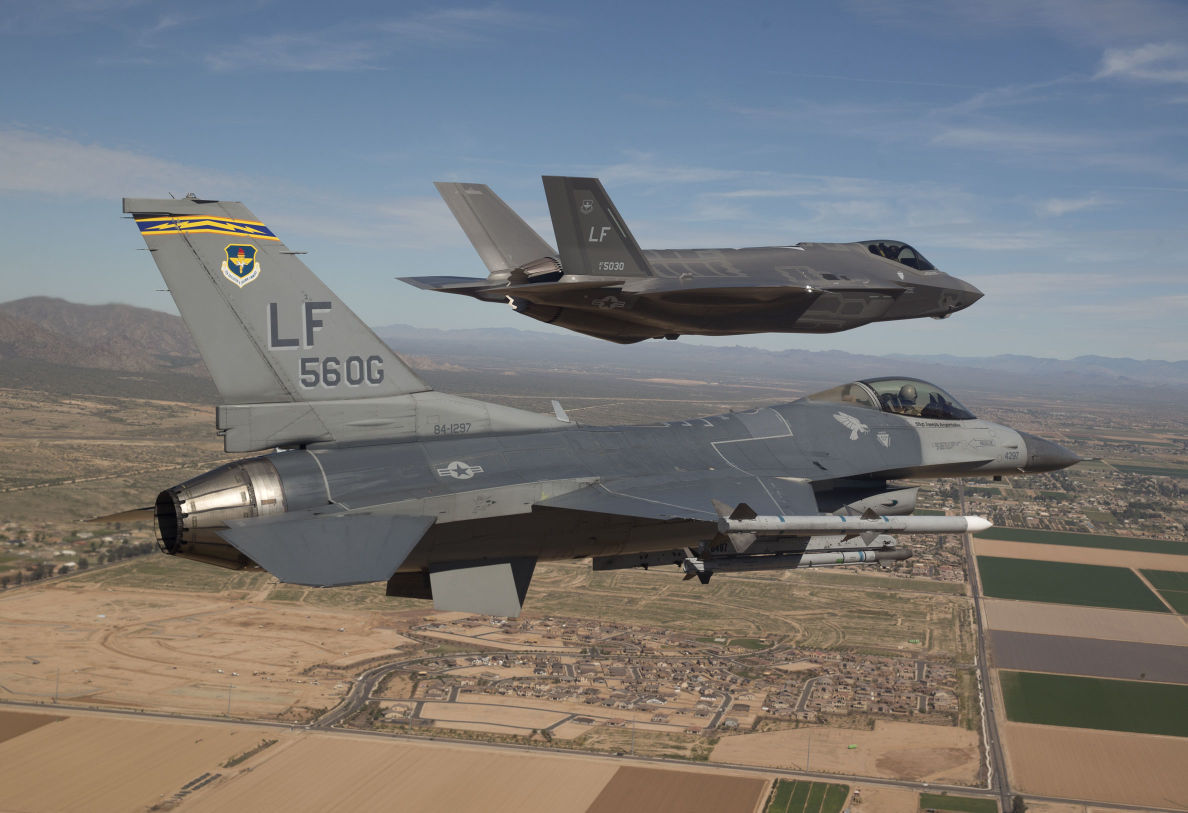Arizona's Luke Air Force Base feels effects of national pilot shortage

Pilots and instructors are in short supply for both the F-16, front, and F-35 fighters at Luke Air Force Base near Phoenix.
GLENDALE - Luke Air Force Base is feeling the effects of a national pilot shortage, which has left the Air Force without enough pilots, maintenance crew and support staff to fully power U.S. military needs.
"Right now we don't have enough of certain types of pilots to actually account for all the jobs that we need to do in the Air Force," said Maj. William Andreotta, operations director for Luke's 56th Training Squadron. "Those can be anything from here in the front line of actually flying the aircraft all the way to staff jobs that require pilot knowledge as a background to be able to do the job."
The Air Force is trying to make training more efficient, and programs around the state are playing their part by building passion in high schoolers, teaching them the intricacies needed to become a pilot, mechanic or air-traffic controller.
As of September, the Air Force had unfilled positions for 1,500 pilots. At Luke, a training base, the shortage of instructors to train fighter pilots to fly F-16 and F-35 fighter jets is particularly acute.
Pilots have tough work lives and those undergoing training often leave to pursue a better balance between work and family life, leaders said.
Luke spokesman Jensen Stidham said that as of September, there were 58 instructor pilots, leaving 26 open positions for F-16s. For F-35s, 85 out of 101 instructor-pilot positions were filled.
A backlog of aircraft mechanics also has led to a decrease in available aircraft, which leads into an ongoing loop: The number of pilots who can train depends on the number of aircraft available.
Andreotta said one way the Air Force is trying to solve the problem is to make training more efficient.
"Where we can decrease the course length but not decrease the quality of the product that we're sending out there, so that's how we produce more" pilots, he said.
Air Force officials say their goal is to have most positions manned at 95 percent by 2024, Andreotta said. But that's going to be longer for fighter pilots: the 95 percent goal is set for 2029.
For the high-schoolers, students are learning what it takes to build a kit airplane through Southern Arizona Teen Aviation, a nonprofit organization. They're building a two-seat Van's Aircraft RV12 and will fly it, according to the group's website.
The students are involved in building all parts of the single-engine airplane, the website says. The experience gives the students skills to pursue careers ranging from pilot to aircraft mechanic.
"We're trying to give the kids an opportunity to get their hands on an airplane, see what an airplane's like, fly on an airplane, work with an airplane, build an airplane," co-founder Alan Muhs said.
At Phoenix's South Mountain High School, senior Jaja Obasi enrolled in his school's aerospace program.
According to the school's website, students enrolled in the program learn aviation fields such as aircraft maintenance and air-traffic control and can work towards their private-pilot certificate from the Federal Aviation Administration.
Obasi said he loves aviation and that he wants to become a pilot.
"Then just getting up in the air, that feeling that you get in your stomach," he said.



Ingen kommentarer:
Legg inn en kommentar
Merk: Bare medlemmer av denne bloggen kan legge inn en kommentar.